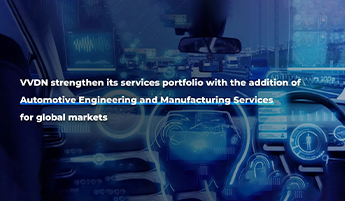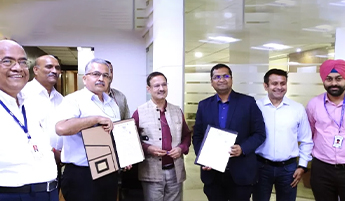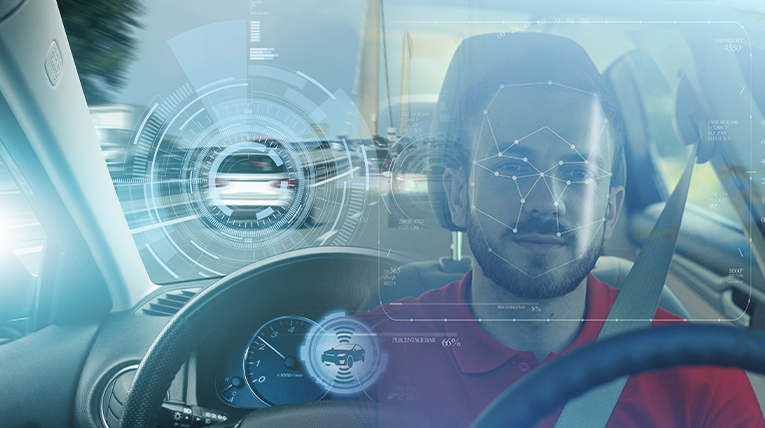In the ever-evolving automotive industry, fleet optimization has become a crucial aspect for businesses aiming to maximize efficiency, reduce costs, and enhance overall safety. The integration of drive recorders into fleet operations offers a holistic solution to address these challenges. These advanced devices play a pivotal role in capturing critical data related to drive behavior, vehicle performance, and road conditions.
According to Consegic Business Intelligence analysis, the Drive Recorder Market reached a value of USD 4,874.53 Million in 2022 and is projected to exceed USD 11,765.58 Million by 2030, showcasing a CAGR of 11.9%.
What is a Drive Recorder?
A drive recorder, also referred to as a dashcam, is a device mounted on the dashboard or windshield of a vehicle to record video footage of the road while driving. A dash cam is designed to capture real-time footage and audio, providing a visual and audio record of events that occur during the vehicle’s operation.
Different types of Dashcam
- Basic Dashcams: These are entry-level dashcams that usually record video footage in a loop onto a memory card. They may have limited features, such as loop recording, date and time stamp, and a basic interface.
- Dual-Channel Dashcam: Dual-channel or dual-lens dash cams have two cameras: one to face the road ahead and the other to record the interior of the vehicle or the rearview. This type of dashcam is useful for ride-sharing drivers, taxi drivers, and anyone who wants to monitor both the front and back of the vehicle.
- Front and Rear Dashcam: Similar to dual-channel dashcams, but instead of an interior-facing camera, they have a secondary camera to record the rear view of the vehicle.
- 4 Camera Dashcam: These dashcams are equipped with a 4-camera configuration. One camera is dedicated to front-facing recording, another for driver monitoring, and the remaining two are positioned for monitoring the right and left sides of the vehicle. The driver monitoring camera ensures attentiveness, while the side cameras detect potential hazards in the blind spots and issue alerts accordingly.
- Mirror Dashcam or 3-Channel Camera Mirrors: These dashcams are integrated into rear-view mirrors, providing dual functionality as both a rear-view mirror and a dashcam.
The Importance of Drive Recorders in Fleet Optimization
- Enhanced Safety: Drive recorders serve as a robust safety tool by continuously monitoring drive behavior and detecting potential risky actions, such as aggressive driving, sudden braking, and speeding. Such insights enable fleet managers to implement proactive measures, including drive training and coaching programs, to reduce the likelihood of accidents and improve road safety.
- Accident Analysis: In the unfortunate event of an accident, drive recorders provide valuable data and real-time footage, allowing a comprehensive analysis of the incident. This information aids in determining faults, understanding the causes, and making informed decisions to prevent similar incidents in the future.
- Driver Performance Evaluation: By tracking drivers’ actions and driving patterns, drive recorders enable businesses to evaluate driver performance objectively. This data-driven approach helps identify top-performing drivers and areas where improvements are required, leading to more efficient and effective operations.
- Fuel Efficiency and Emission Reduction: Drive recorders facilitate the analysis of vehicle performance, identifying inefficiencies that may impact fuel consumption and emissions. Fleet managers can use this data to optimize routes, implement maintenance schedules, and adopt eco-friendly driving practices, ultimately reducing fuel costs and the organization’s carbon footprint.
The Impact of Drive Recorders
Recent studies have shown remarkable improvements in fleet performance and safety through the integration of drive recorders into operations:
- Accidents Reduced by up to 40%: Fleets equipped with complex drive recorders have reported a significant decline in the number of accidents. The data-driven approach helps curb reckless driving behavior and promotes a culture of safety among drivers.
- Fuel Savings of up to 15%: By analyzing the recorded data, fleet managers have achieved substantial fuel savings by optimizing routes and addressing fuel-wasting driving habits.
- Increased Driver Retention: The implementation of complex driver recorders has led to better transparency and communication between drivers and fleet managers, resulting in improved driver satisfaction and reduced turnover rates.
VVDN’s Expertise in Complex Drive Recorders
VVDN excels in designing and developing drive recorders tailored for OEMs, automotive manufacturers, and Tier-1 suppliers. Our specialization lies in creating sophisticated drive recorder systems capable of seamlessly managing and processing data from 20 or more cameras, along with multiple Lidar and radar sensors. These advanced drive recorders are engineered to meet the demanding requirements of modern automotive applications, providing comprehensive and reliable data capture and analysis for enhanced safety and performance.
To learn more about our offerings and discuss how we can collaborate to meet your dashcam requirements, please contact us at info@vvdntech.com
























